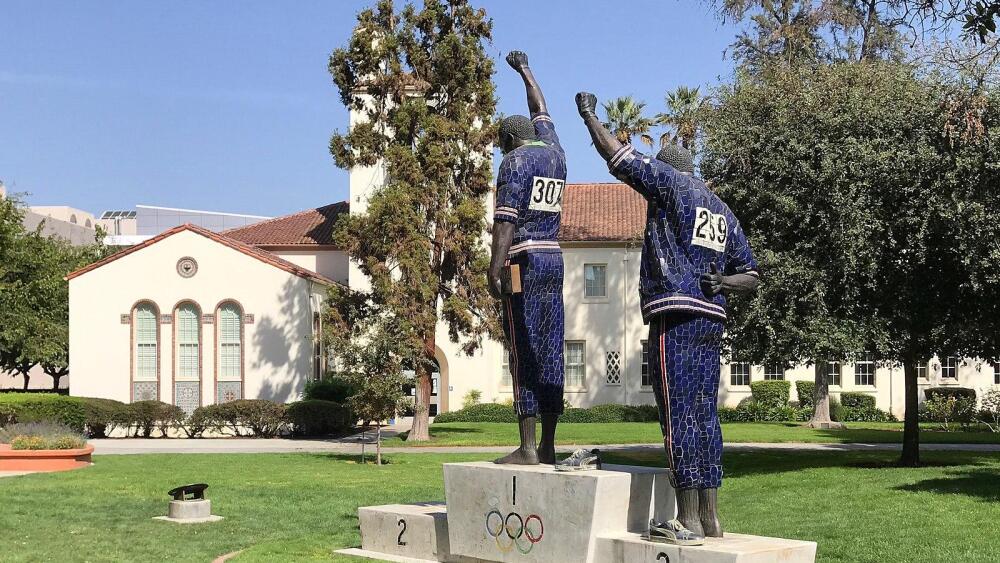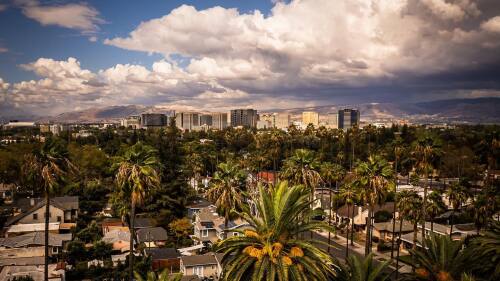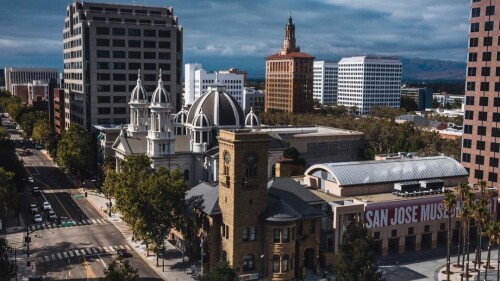There have been many moments in San Jose history that have made national + international ripples, and today we’re taking a closer look at one of them.
In 1968, two San Jose State University student-athletes stood on a podium with fists raised as the “Star Spangled Banner” played behind them. This moment would eventually be remembered as one of the biggest events in Olympics history + the Civil Rights movement.
🏅 The protest
These athletes — Tommie Smith and John Carlos — were prominent members of the Olympic Project for Human Rights (OPHR). Through advocating for change within the International Olympic Committee, the two decided that if one of them won a medal, they’d use their moment on the world stage to protest racial injustice in America.
After Smith and Carlos placed first and third in the 200-meter race, they took to the winner’s podium and accepted their medals wearing black socks, black scarves, black gloves and beads. These were used to symbolize poverty + Black pride, and to honor the countless African Americans who were brought over on the Middle Passage or later lynched.
Then, the men took their positions and raised their fists in the Black Power salute. Peter Norman — the white Australian athlete who had placed second — empathized with the protest and joined the men in wearing a OPHR badge.
All three men faced serious personal and professional backlash for their involvement in the protest.
✊ The legacy in San Jose
In 2005, SJSU student Erik Grotz learned about Smith and Carlos’s story and pushed the school to formally recognize these unsung heroes. The result was a statue entitled, “Victory Salute,” which memorialized that historic moment.
The 22-foot statue prominently features Smith and Carlos, but Norman requested that his space in the statue be left empty so that viewers could “Take a Stand” and join the movement.
To view the statue, you can visit the lawn behind Tower Hall at SJSU — and to learn more, check out videos from SJSU’s Landmark + Legacy event and their booklet on SJSU’s legacy of social action.
What other moment in San Jose’s history would you like to learn about? Let us know.













